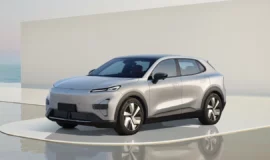
In the past few years, government and environmental protection agencies have shown concern over massive engines due to global warming concerns. As a result, auto manufacturers now prefer smaller engines with higher efficiency ratios. To draw more power from small engines, auto manufacturers often use turbochargers and superchargers in their cars.
We have seen bigger engines taking a beating from smaller ones just because they have a turbo or a supercharger installed in them. So how does it happen?
In this blog, we’ll tell you the difference between a supercharger and turbocharger and which is better.
Let’s find out.
What is a Turbocharger?
A turbocharger is basically an air compressor that compresses the air into the engine. More air means more fuel which increases the overall output of the engine.
A turbocharger is often installed near the engine’s intake manifold, so that the compressed air can be directly inserted into the chamber along with the rich fuel mixture. All of this happens before the combustion occurs in each combustion cycle.
How does it Work?
Turbochargers work on a simple mechanism of pumping high-pressure air into the engine. As a result, a smaller engine produces the power output of a much larger engine block. An important feature of the turbo is it’s operated by the exhaust airflow. Once the engine revs, outflow from the exhaust increases, which then spins the turbine in the turbochargers.
Turbo can be divided into two sections, the compressor and the turbine.
The compressor end is the intake of the turbo. Aluminum is the material of choice for most compression ends due to its lightweight and high heat transfer rates. Cold air gets into the turbo, where the compressor wheel pressurizes the air and then passes it to the turbine. The compressor wheel spins at high speeds hence increasing the speed and the air pressure.
The air is then passed down to the turbine end which is made up of stainless steel or cast iron. Turbo spools at up to 280,000 rpm, and temperature in this section can reach upto 960°C. The air is then cooled down and sent back into the engine’s air intake. Exhaust air exits the car through the car’s exhaust system after spinning the turbine of the turbo.
This process gets repeated in each combustion cycle to put the waste energy and air to use. Thus highly increasing the efficiency and power output of the car.
What is a Supercharger?
Supercharger increases the efficiency of the engine by increasing the density of the air above the atmospheric pressure. This pressurized air enters the engine along with a rich fuel mixture allowing for higher combustion rates. The engine has to do more work to burn this rich air-fuel mixture, resulting in more power output from a smaller displacement engine.
How does it Work?
Unlike turbochargers that operate by the outflow of air from the exhaust manifold, superchargers are powered directly by a pulley or crankshaft of the engine. Since it’s powered directly by the engine, it’s active all the time and the output of superchargers instantly changes without any lag. Thus allowing for superior control and responsiveness.
Superchargers have a large air intake having an air filter installed on it. The air intake pipe then draws this clean air into the supercharger housing where it’s compressed. Supercharges use a binary rotor system rotating in opposite directions. The highly pressured air is then passed down to the combustion chamber along with the fuel.
What’s the Difference Between Turbocharger and Supercharger?
There are two significant differences between turbochargers and superchargers. The first one is that the turbo operates by creating a vacuum in the intake manifold. This is because the intake manifold can only allow a certain amount of air. With turbo spooling, pressurized air gushes into the combustion chamber at a much higher pressure than the atmospheric engine.
The high intake volume of air allows for a higher compression ratio in the turbo engines. As a result, more fuel is injected into the engine chamber hence allowing for more robust combustion.
Secondly, turbo runs off exhaust air flow which means it runs off waste energy. It requires no energy from the engine to operate, thus making it more efficient than the superchargers. It also has a caveat, turbos are known for their lag. It happens because the engine has to rev higher to increase the exhaust airflow which then spins the turbo. This whole process takes a second or two which is known as lag in the turbo engine.
The supercharger also pressurizes the air above atmospheric pressure. The difference is that a supercharger requires engine power to operate. It operates by rotating the turbine through the crankshaft without creating a vacuum. So superchargers can deliver high boost even at lower rpms.
Just because superchargers produce more hp, have more life than turbochargers, are cheaper and do less damage to the engine makes them a better option than turbochargers. Still auto manufacturers prefer turbo due to better fuel economy.
Which one do you prefer, turbochargers or superchargers? Let us know in the comments below.








Leave a Reply